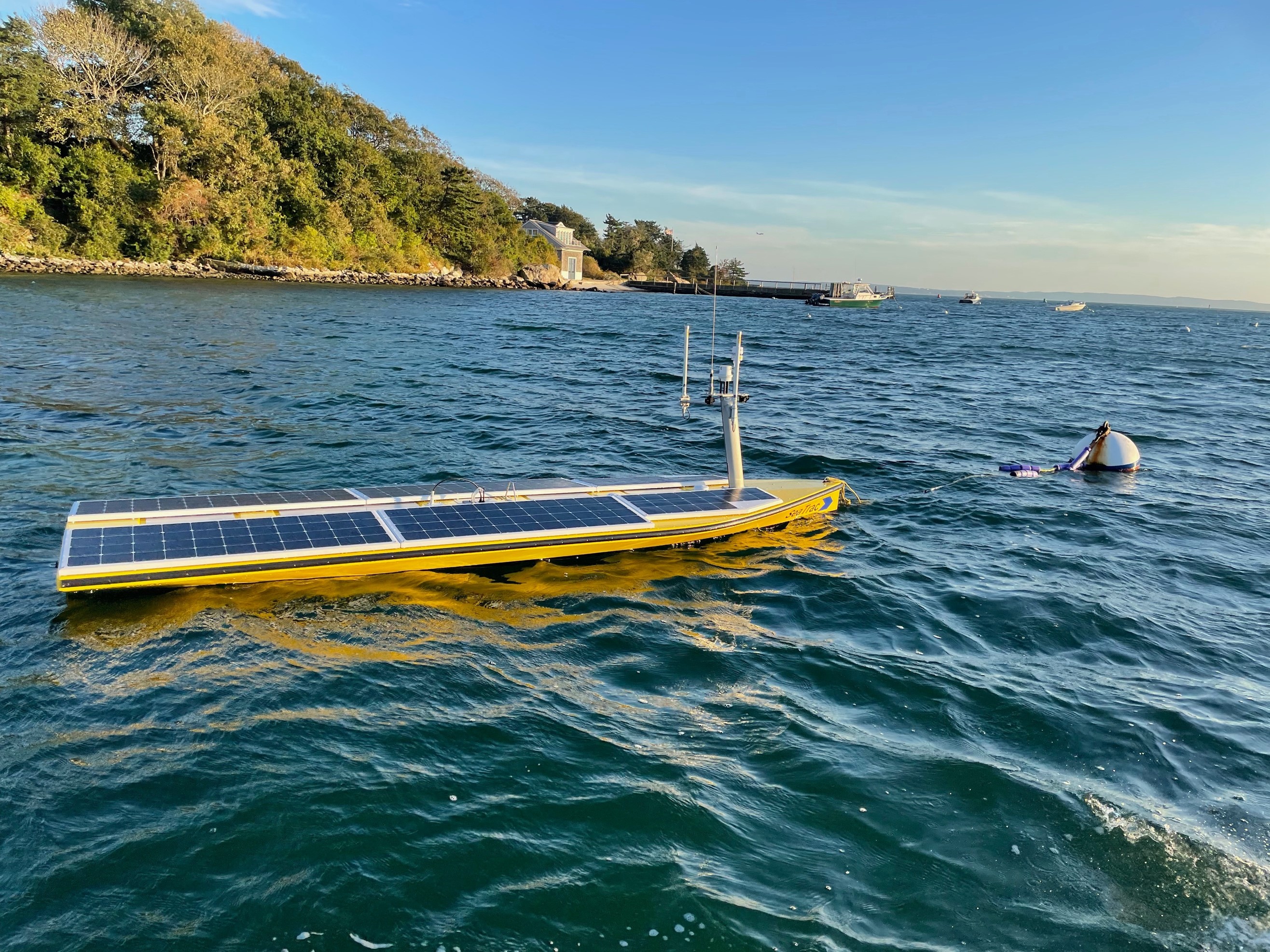Hazaroud Waterborne Biochemical Agent Detection Using ASVs
 In collaboration with Woods Hole Oceanographic Institute (WHOI), and support
from the US Army Engineer Research and Development Center (ERDC), GRI
researchers are working to understand if autonomous surface vessels (ASVs) have
the ability to identify hazardous chemicals and organisms within waterways. A
SeaTrac ASV equipped with chemical and biological sensors is undergoing trials
across diverse waterway environments to determine whether chemical and
biological readings obtained by the ASV align with results derived from field
collected samples analyzed in a laboratory environment.
In collaboration with Woods Hole Oceanographic Institute (WHOI), and support
from the US Army Engineer Research and Development Center (ERDC), GRI
researchers are working to understand if autonomous surface vessels (ASVs) have
the ability to identify hazardous chemicals and organisms within waterways. A
SeaTrac ASV equipped with chemical and biological sensors is undergoing trials
across diverse waterway environments to determine whether chemical and
biological readings obtained by the ASV align with results derived from field
collected samples analyzed in a laboratory environment.
It is a water-borne surface drone that can be used for environmental forensics, as well as persistently survey for potentially lethal chemicals and biological agents.
For more information regarding this project visit: Autonomous Mobile Monitoring
